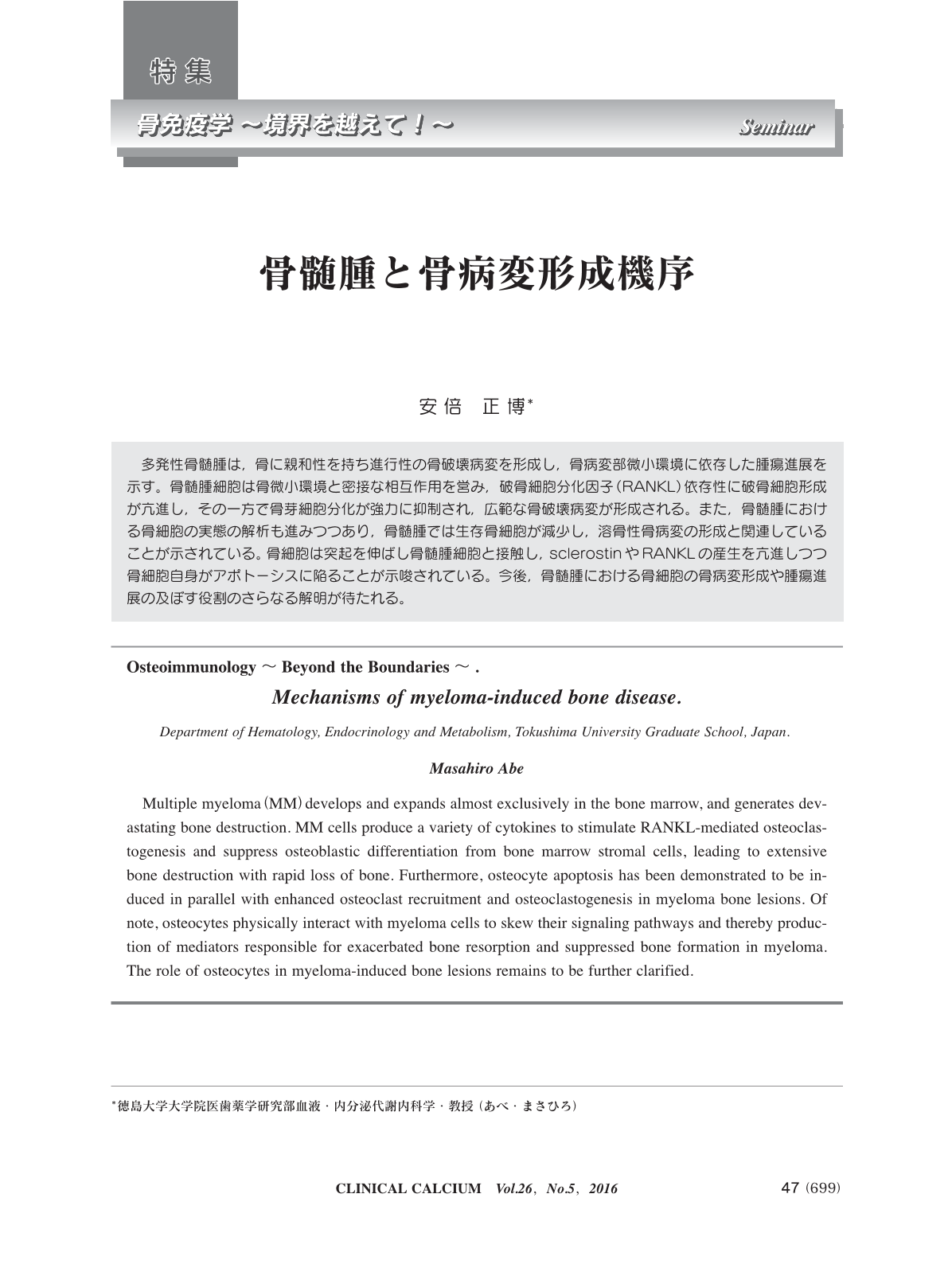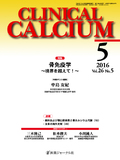Japanese
English
- 有料閲覧
- Abstract 文献概要
- 1ページ目 Look Inside
- 参考文献 Reference
多発性骨髄腫は,骨に親和性を持ち進行性の骨破壊病変を形成し,骨病変部微小環境に依存した腫瘍進展を示す。骨髄腫細胞は骨微小環境と密接な相互作用を営み,破骨細胞分化因子(RANKL)依存性に破骨細胞形成が亢進し,その一方で骨芽細胞分化が強力に抑制され,広範な骨破壊病変が形成される。また,骨髄腫における骨細胞の実態の解析も進みつつあり,骨髄腫では生存骨細胞が減少し,溶骨性骨病変の形成と関連していることが示されている。骨細胞は突起を伸ばし骨髄腫細胞と接触し,sclerostinやRANKLの産生を亢進しつつ骨細胞自身がアポトーシスに陥ることが示唆されている。今後,骨髄腫における骨細胞の骨病変形成や腫瘍進展の及ぼす役割のさらなる解明が待たれる。
Multiple myeloma(MM)develops and expands almost exclusively in the bone marrow, and generates devastating bone destruction. MM cells produce a variety of cytokines to stimulate RANKL-mediated osteoclastogenesis and suppress osteoblastic differentiation from bone marrow stromal cells, leading to extensive bone destruction with rapid loss of bone. Furthermore, osteocyte apoptosis has been demonstrated to be induced in parallel with enhanced osteoclast recruitment and osteoclastogenesis in myeloma bone lesions. Of note, osteocytes physically interact with myeloma cells to skew their signaling pathways and thereby production of mediators responsible for exacerbated bone resorption and suppressed bone formation in myeloma. The role of osteocytes in myeloma-induced bone lesions remains to be further clarified.



